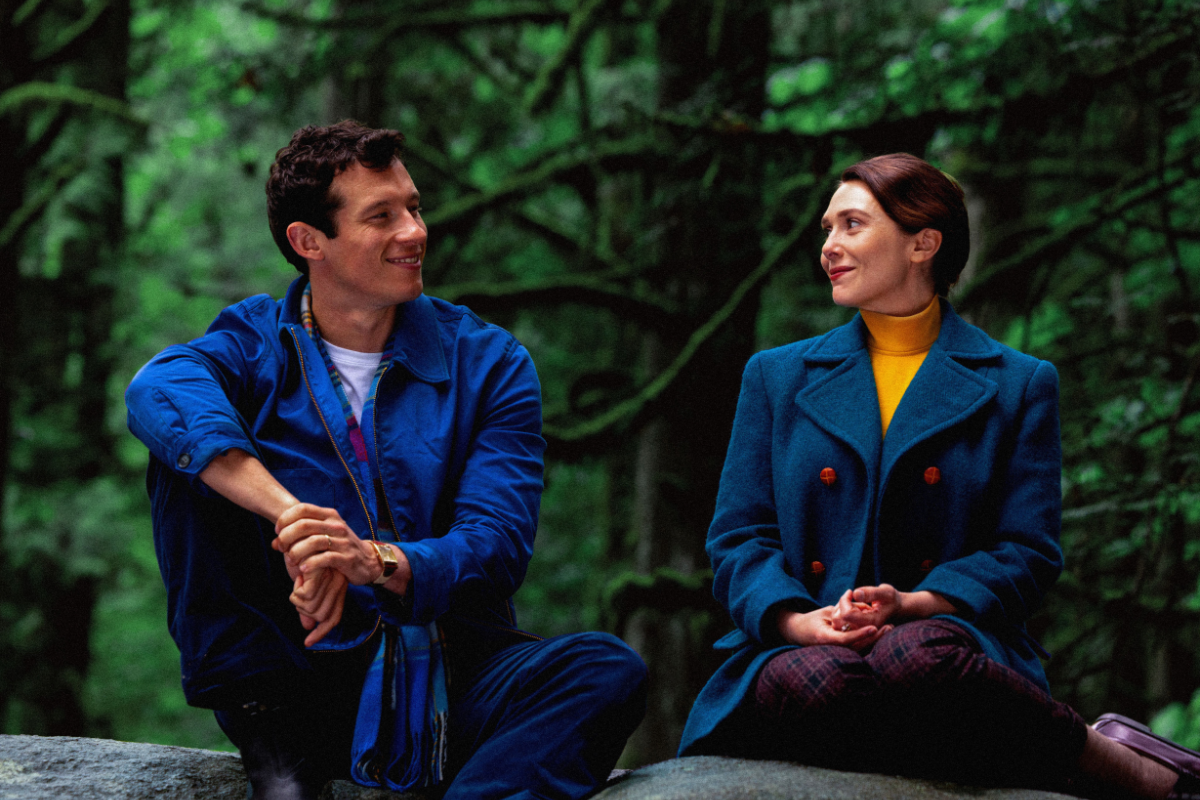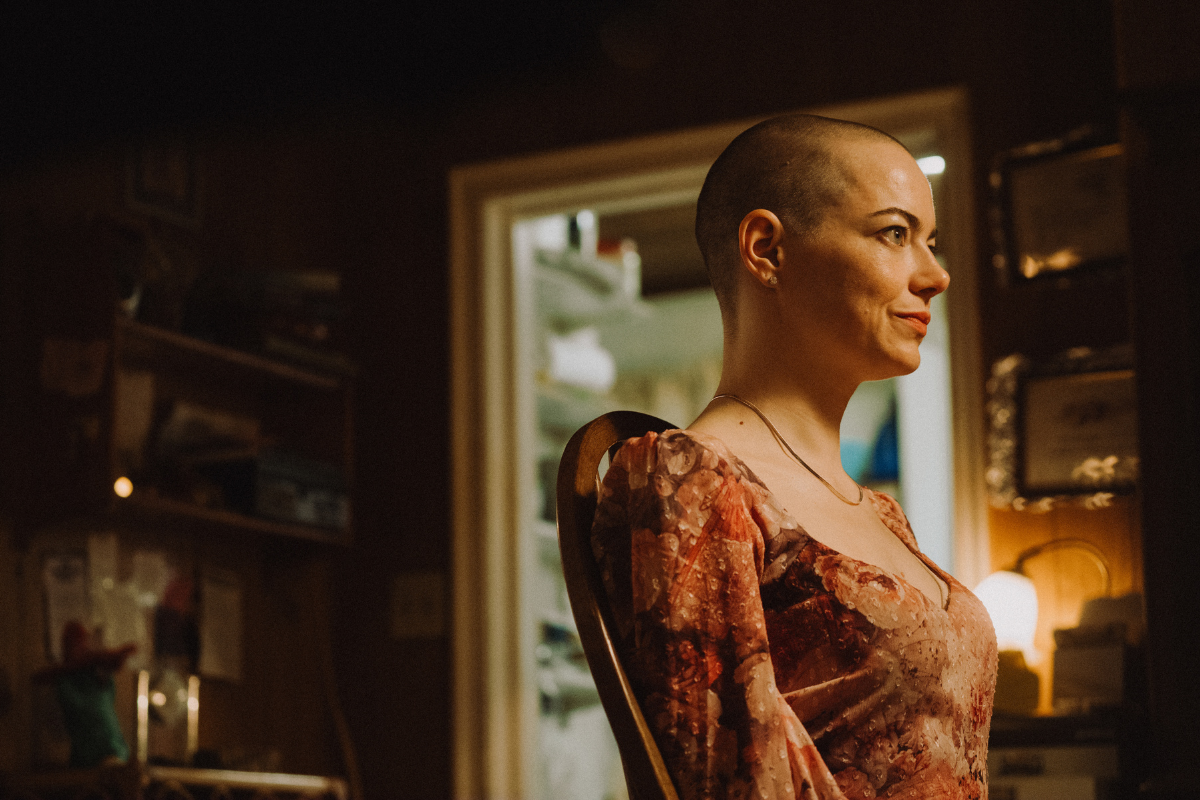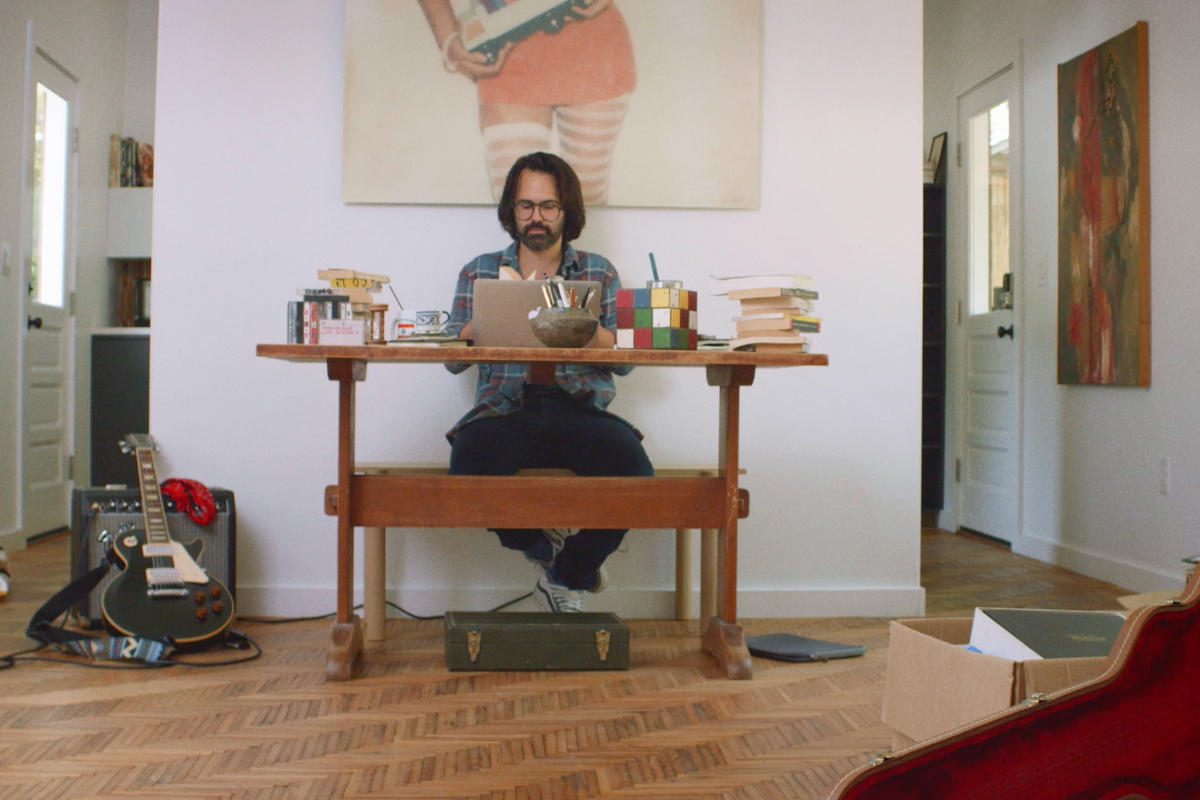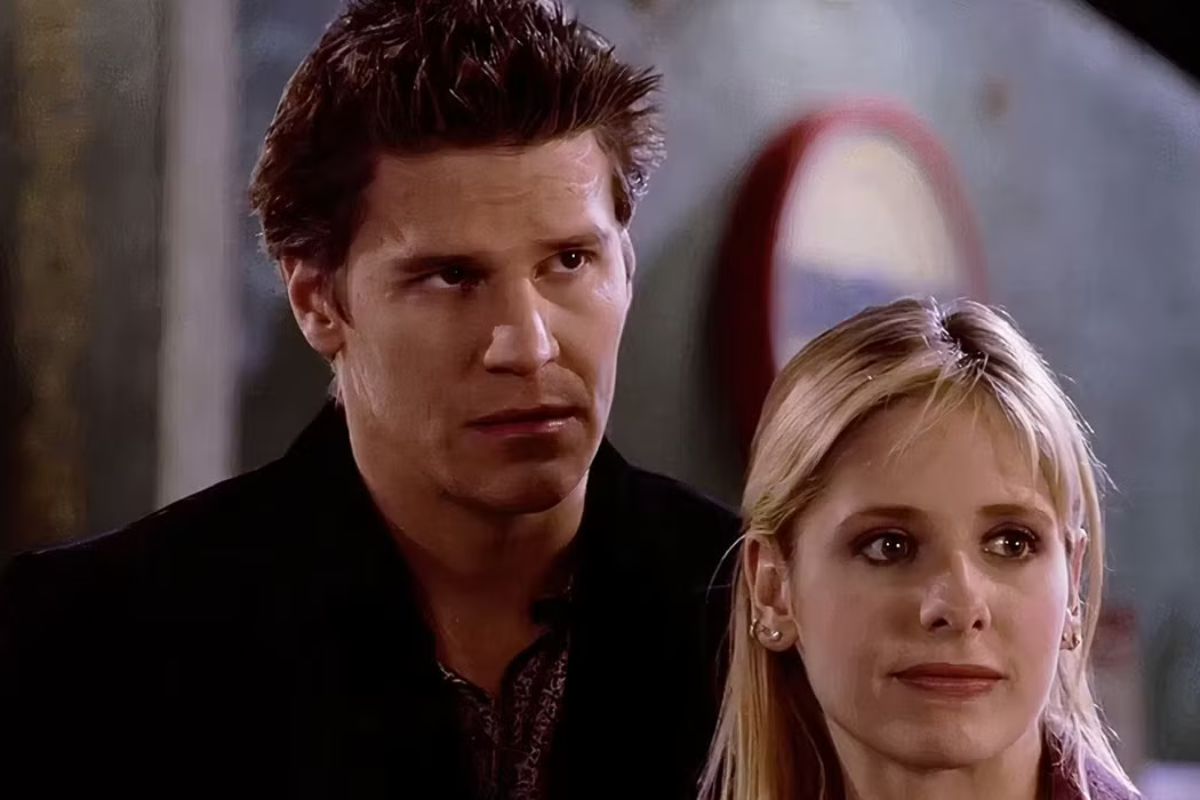Steps to Selling a Script and Getting It Produced into a Film – Case Study
Script discusses selling a script with the husband & wife writing team, Jon Russell & Tracy Nicole Cring, screenwriters of the indie feature film ‘This is Nowhere.’
Heidi Elizabeth Philipsen-Meissner is an award-winning producer, director, actress and freelance journalist, whose career has spanned from Berlin and Hamburg, Germany to New York and Michigan over twenty years. Follow Heidi on Twitter: @HeidiPhilipsen
We catch up with the husband & wife writing team, Jon Russell & Tracy Nicole Cring. The couple has penned, produced and directed over ten micro-budget independent feature films, including two features currently in post, HOBO HEY SEUS and THIS IS NOWHERE.
You don’t have to use every great idea you have in one script. Pace yourself, save those insights and plots for, hopefully, the many screenplays you’ve yet to write.
Tracy Nicole Cring: I am a cinematographer and editor by trade and a screenwriter out of love and necessity.
In the midst of writing a screenplay, I pitched a backstory for the main character to my writing-partner-husband, Jon Russell Cring – outlining all the key elements that I wanted therein: I explained how this main character grew up in a down-and-out-family-owned motel; A myriad of people lived in the rooms; There was a complex relationship between the parents; And, at some point, he stopped me and said this was actually an idea and plot for an entirely different film. This is what I count on in Jon, brutal honesty and an unbridled imagination. I went right away and banged out some pages, introducing the setting and the characters living there.
The first thing out of his mouth was, “Well, you know how it has to end…” He proceeded to lay out the story arch and then described the last scene which made me cry with sadness for the characters. The ending has remained the show stopper of the script. This exemplifies our collaboration. Jon sees the battle field, I see the bayonet. He has a view of the entire film and I add details, then we act out the scenes to write believable and conversational exchanges between the characters.
Cring & Cring like Lennon-McCartney. No matter who wrote the music and who wrote the lyrics we derive inspiration and admiration from our partnership.
Write with a budget in mind: “Your brain has no budget. You can dream it up, but can you afford it?”
Jon Russell Cring: As guerrilla filmmaker and director of over twenty titles, I am acutely cognizant of the monetary impact on every scene Tracy and I write together. If you just love the work and feel the urge to purge, by all means pen that screenplay. If you want to see your script playing out on the silver screen, write for your market. Don’t stay cloistered in some attic at your laptop in front of a window that looks out over an inspiring scene like you’re Stephen King.
Attend filmmaker events, go to film festivals, befriend any and all who aspire to make cinematic art. There is value in learning how much things cost and how difficult they might be to pull off on film.
Every line you write has a dollar amount to a producer who will be hiring an actor to speak the dialogue or paying the insurances on a car chase with an explosion. If your networking has led you to an enclave of existentialist filmmakers with ultra-low budgets, better not to pitch them your version of a Jason Bourne flick.
Case in point: Heidi Philipsen-Meissner, a talented filmmaker and actor posted to social media that she was interested in producing a film with a modest budget, a female protagonist, with limited locations.
Tracy and I looked through the scripts we had available and sent her This is Nowhere, the story of a teenage girl who lives and works at the motel her parents own and the outcasts who occupy the rooms. In other words, we networked. Our story met the producer’s needs. Heidi read it, loved it and bought it. Bam! We optioned the script.
Listen to critiques of your work with your heart, and address the emotion of what people are saying rather than their suggestions for changes.
Tracy Nicole Cring: Depending on your contract, signing the paperwork might be the last time you see your little script “baby.”
In our case, we landed a wonderful producer in Heidi, and eventually she hired Jon to share in directing and myself as the director of photography.
This is a rare case of amazing collaboration and trust on Heidi’s part, so I can’t say many people could ever expect this to play out in quite that way.
It’s nerve racking to show your work to people, so I am glad I didn’t know Heidi had begun sharing the script with a plethora of her filmmaking colleagues for feedback and first impressions.
We heard wonderful things in the feedback Heidi shared with us as related to her from her colleagues, but there was something wrong with the ending. We heard it from several reviewers. It was phrased in a myriad of ways but it came down to the tone of the ending breaking from the rest of the film.
One comment in particular was, “You have such a beautifully nuanced film and it goes Hollywood at the end.”
It’s easy to correct specific issues, but this was a feeling or a mishandling on our part. We mulled it over for several weeks and added more ennui, subtracted vehemence, restructured the order of the scenes, but it wasn’t there yet. We took in all the feedback and tried to translate it into a solution to address the emotional needs of the critics, not necessarily the practical solutions they would offer.
One morning, I woke up excited and exclaimed, “I had a dream and I know what the problem is, and it’s so easy to fix.”
The solution was a matter of simplification. Remember that earlier point I made about keeping things simple and not stuffing in too many ideas?
It’s good advice that even I need to remind myself to take!
Be ready to write… and rewrite… and rewrite some more – even while filming!
Jon Russell Cring: I think writers do themselves a disservice by expecting their text to be law. The letter killeth, but the spirit giveth life.
Imagine a film set – crew and cast scurrying around, building a tent made of black canvas, setting chairs up inside, hundreds of feet of cord sending images from the camera on set to a huge monitor for the director’s pleasure.
Being on the set of This is Nowhere, was a far cry from my mini-micro-budget filmmaking days, when you barely had a budget to feed crew, much less afford to pay true industry professionals, but all Tracy and my prior hard-fought-for, thinking-on-your-feet experience was about to come in handy.
On a film set, things take time. Heidi had put together a cast and crew of wunderkinds, but TIME is usually that silent partner that throws a wrench in all grand plans.
Having Tracy and me, the writers, on set was actually extremely helpful. It’s the job of a Director to deliver the true spirit of a script using the tools they have and the mechanisms which are set in place.
Heidi, Tracy, and I often put our heads together to further whittle down scenes and imagery to the most effective essentials – adjusting to and applying the set, scenery, props – heck, even weather – we had on hand, that we never knew we had when we were originally writing the script.
There is one on-set re-write of which I am particularly fond:
We were asked to take a scene between the main character, DARCY, and her father, ALDO, without altering the length or amount of dialogue, and add more affection and nuance to their relationship.
Tracy turned to me and said, “We only have five lines to deepen the connection between these two characters.”
We took our “givens,” i.e. that our DARCY character is on the cusp of turning sixteen, and threw ideas back and forth, reminiscing about how life was for us as teenagers and how our families celebrated birthdays.
Tracy offered that her mother always made her cakes homemade, but it was special event, above and beyond, to get a cake from the bakery with fluffy roses and your name in sugary script.
That was the hook we needed.
Incorporating pieces of our personal journey in the writing adds life and resonates in an almost inexplicable way.
Consider yourself a pro from the get-go and you will get-there, but not without growing pains.
Tracy Nicole Cring: I’m actually going to quote a tweet Kevin Smith made, “Once you get paid to do it, doesn’t matter whether someone thinks you’re good at it or not; opinions pay imaginary rents, kids. You get paid to do it, you’re a pro.”
I was inspired by that piece of advice more than you know. We sold the first script we ever wrote right out of the gate. It has yet to be made, so you feel a bit of the sting other screenwriters have felt watching movies similar to theirs come out while in a closet somewhere your brilliant prose shrivels in a binder on a shelf.
You get upset because you think you picked the wrong company to sell out to. I can only offer you my humble opinion, tempered by the brilliance of Sansei Smith;
“You completed something, you made money on it – you won. Do your due diligence to give your story its greatest shot, but once it’s optioned away, you have done your bit for God and country.”
It has been an honor and a blessing to watch Heidi run with the musings Jon and I banged out at the keyboard while drinking coffee together. I really enjoyed the process of creating it, and I am so thrilled to see it come to fruition.
- Alt-Script: Four Ways to Control Your Script's Budget Without Compromising the Film
- 7 Reasons to Attend Film Festivals
- Balls of Steel: 11 Ways to Avoid Disaster When Choosing a Writing Partner
Get tips outlining your story with Peter Russell's webinar
The Beats of ALL Hit Movie Stories: Essential Moments Your Script Should Have
Top screenwriting and film publication, founded in 1989, published by Active Interest Media. Twitter: @scriptmag







